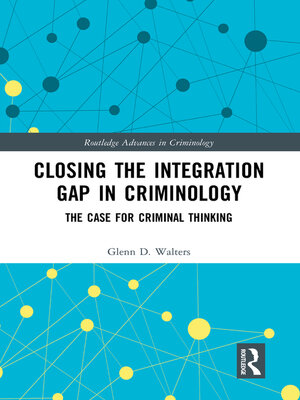Closing the Integration Gap in Criminology
ebook ∣ The Case for Criminal Thinking · Routledge Advances in Criminology
By Glenn D. Walters

Sign up to save your library
With an OverDrive account, you can save your favorite libraries for at-a-glance information about availability. Find out more about OverDrive accounts.
Find this title in Libby, the library reading app by OverDrive.



Search for a digital library with this title
Title found at these libraries:
| Library Name | Distance |
|---|---|
| Loading... |
Closing the Integration Gap in Criminology: The Case for Criminal Thinking offers a multi -stage model of theory integration that organizes verified risk factors around the construct of criminal thinking to provide an exemplar working paradigm for criminology. In the model, once relevant risk factors have been identified, they are organized into triads —three-variable networks of antecedent, mediating, or moderating effects—and then those triads are combined into clusters of thematically related constructs.
While debate continues to rage over how to handle the burgeoning number of theories in criminology, little significant progress has been made in reducing the number of criminological theories. This book argues that theoretical integration is vital to the continued viability of criminological theory and to the growth and development of criminology as a scientific discipline. It posits that criminal thinking may be useful as a core variable in constructing a useful integrated theory for criminology, and maps out a plan for scholars to organize information for further study.
The innovative theoretical approach in this book is essential reading for students, academics, and researchers in both criminology and forensic psychology concerned with the reduction of crime via scientific inquiry.







